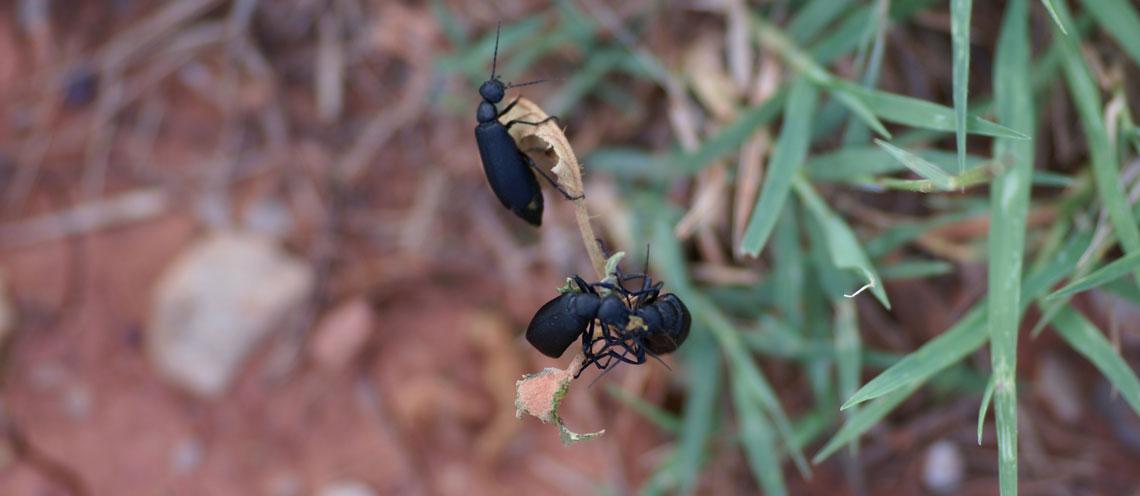
What is that in my hay?
Friday, July 8, 2016
Most horse owners feed some hay to their horses. Hay can be used to supplement pasture when growth is slowed by cold or extreme heat.
If a horse is stabled due to injury or competition, owners will use hay to provide roughage, the basis of the horse diet. Often hay is fed to horses during long trailer rides.
To make hay, the plants are cut and laid out to dry in the sun. When the plants reach an acceptable level of moisture, the hay is baled into round or square bales to make transport and storage easier.
For those feeding hay for many years, the list of odd items found in your bales may be extensive. I have found bones, snake skins, flattened rubber balls and various dead animals. These items are unlikely to cause a problem, just an interesting story.
While there are likely many small bugs trapped in hay during the baling process, one of these can prove deadly to your horses.
Blister beetles are a group of plant feeding insects attracted to the flowers in alfalfa or other blooming plants in the hay field.
Typically they crawl out of the hay during the drying process. However, if the hay is crimped prior to drying (to reduce the days needed to dry the hay) they may be killed and trapped in the hay during baling. Beetles may also be killed by tractor tires or the cutting/mowing process.
There are various species of blister beetles. They are typically ¾ to 1 ¼ inches long with narrow bodies. They may be gray to black, solid, spotted or striped.
Blister beetles produce cantharidin, a toxic defensive chemical that protects the beetles from predators. This chemical causes blistering of the skin and mucous membranes of horses. This toxin is quite stable and remains in dead beetles for a long time. As a result, horses may consume hay with dead beetles trapped in the baling process.
The severity of the reaction in horses is related to the amount of toxin consumed and the health and size of the horse.
Cantharidin is absorbed from the GI tract and excreted through the kidneys, resulting in damage to the GI and urinary tracts. Symptoms include colic, urinary straining and frequent urination, diarrhea, lack of appetite, and ulceration of mouth and lips. Damage to the heart may occur as a result of lowered blood calcium levels.
Horses may die within one to three days of initial ingestion. Contact your veterinarian as soon as blister beetle poisoning is suspected.
There is no antidote for cantharidin poisoning; treatment is focused on reducing the absorption of toxin and managing the symptoms.
Develop a relationship with your hay supplier to ensure that measures are being taken to reduce the risk of blister beetle in the hay.
First cutting alfalfa, cut before flowering, and late fall cut hay generally do not contain blister beetles.
Use alfalfa in square bales. Open the bales and examine the individual flakes prior to feeding.
Discard any hay containing beetles and contact your supplier. The toxin is odorless and colorless so don’t rely on your picky eaters to detect the beetles.
Consider whether alfalfa is necessary in the diet of your horses. High quality alfalfa generally exceeds the protein and energy requirements of working horses. Quality grass hays, consumed at recommended levels, are more closely aligned with the dietary needs of adult working horses.
For more information, review the Oklahoma Cooperative Extension Service Fact Sheet.
by Elisabeth J. Giedt, DVM
Veterinary Viewpoints is provided by the faculty of the OSU Veterinary Medical Hospital. Certified by the American Animal Hospital Association, the hospital is open to the public providing routine and specialized care for all species and 24-hour emergency care, 365 days a year.
